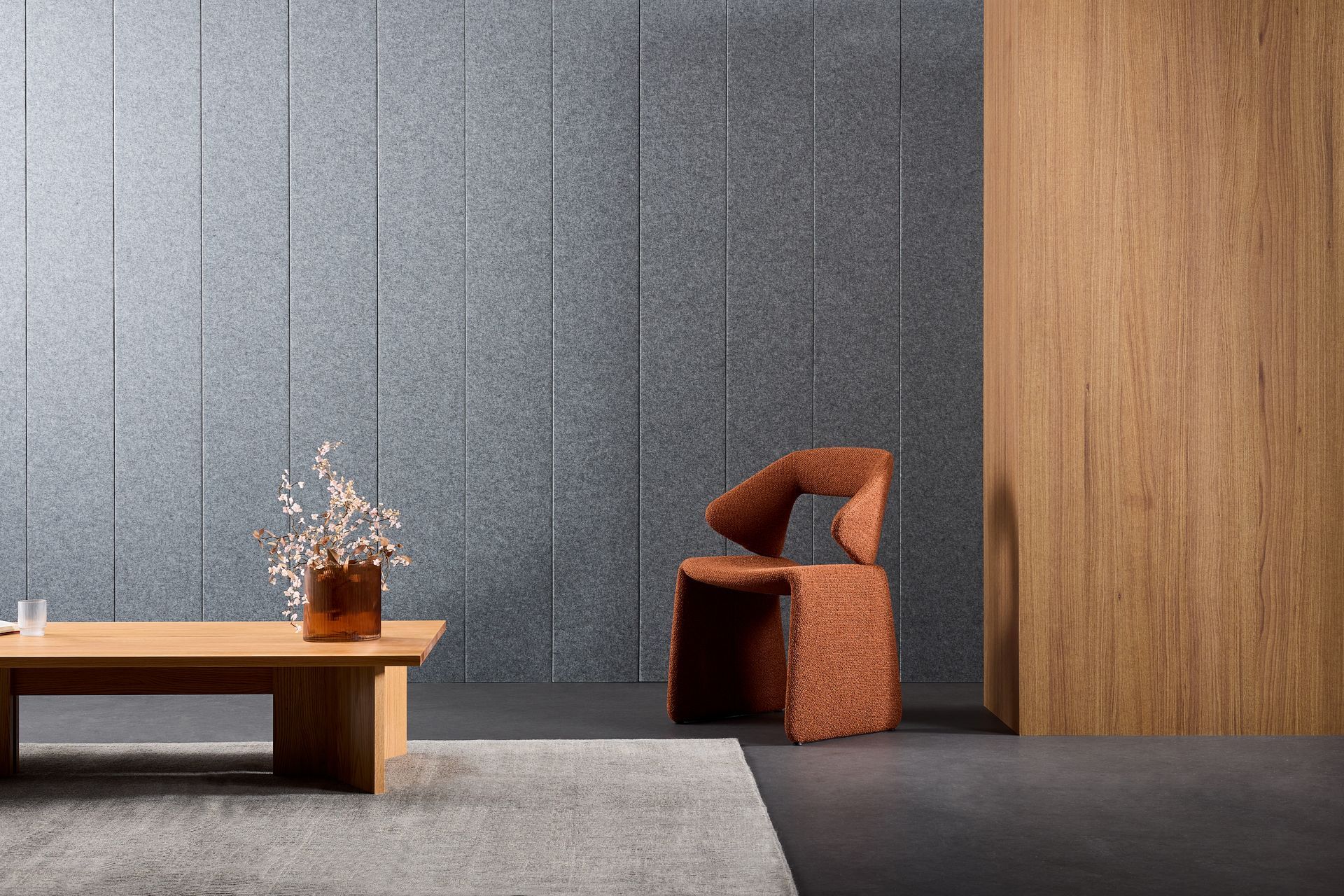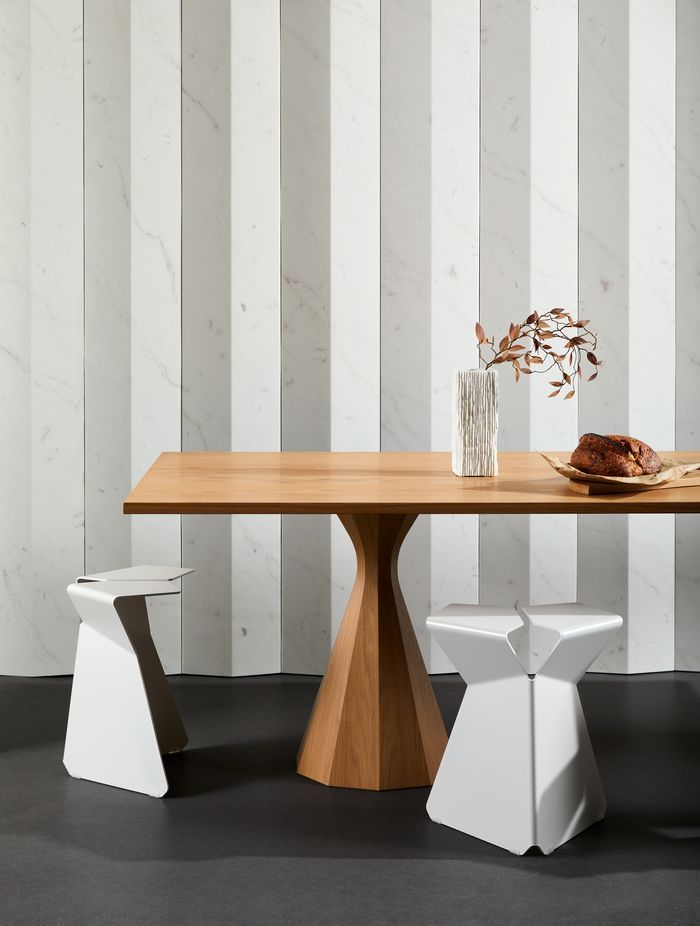Inside the product design process behind the latest innovation from Autex Acoustics
Written by
25 October 2023
•
6 min read

Autex Acoustics has been an innovator in the world of acoustic treatment since the early 2000s, and a specialist in architectural textiles since the business started in the late 1960s. The team of dedicated in-house designers is continuously developing high-performance architectural acoustic treatments that look beautiful, provide exceptional acoustic absorption, and are sustainable at each stage of the product life cycle.
Maybe it’s a passion for good design, or a drive to push the boundaries of interior acoustics, but the Autex Acoustics design team never seems to rest. With a keen eye on the needs of architects and designers, the team has their heads down, problem solving with each new product launch — which is exactly what they’ve done with the latest addition to their comprehensive range. Launched earlier this year, Lanes is a battened-style acoustic treatment designed for interior wall applications, with an impressive Noise Reduction Coefficient (NRC) rating of 0.80 - 0.85, a glueless installation method, and easy disassembly at the end of its life.
ArchiPro spoke to Autex Acoustics senior designer Sean Stirling to learn more about Lanes, and how this innovative range came to life.

ArchiPro: Where did the inspiration for the Lanes range come from?
Sean Stirling: Lanes came about from a growing need we spotted in the market for sustainable acoustic treatments. We wanted to enable people to have beautiful acoustics in their space, while also sticking to our core mission of sustainability and designing for end of life. This meant creating a solution that performs exceptionally well acoustically, but is also gentle on the environment through the use of carbon neutral materials and end-of-life recycling. It began with a napkin sketch from Jono, our creative director, which I then took and brought to life through weeks of development, trial and error, and consultation with a whole host of people inside and outside of Autex Acoustics.
AP: Can you walk me through the product design process from start to finish?
SS: It all starts with an idea and an initial sketch. Lanes had a really strong core mission which made the direction of the design clear from the beginning. We were focused on delivering our usual high standard of aesthetic design, while also considering how it would be disposed of once its time was up. It was still a long road to get to where we are today, with weeks spent physically prototyping and testing the system to look for strengths, weaknesses and potential opportunities within those. As always with design, I’m still looking at new ways we can improve the system as we gain more feedback from the market with the growing number of installations of Lanes out in the world. During the development process we had our concepts tested with clients and installers, which allowed our team to gain valuable insight into changes we needed to make. Working and collaborating with our customers was crucial to both the design process and the success of Lanes as a product.
AP: What was the most complex part of the product design process?
SS: Sustainability played a massive role in the design process, and drove every move we made throughout. We wanted to ensure we were developing a solution that could be removed at the end of its life with as little impact on the environment as possible. The most complex part was finding the balance between aesthetics and function. We needed to create something that could do both in equal measure, which leads to compromises on both ends. Hours of testing and going back to the drawing board a few times contributed to what you see today. To be honest, the prototyping and testing phase of the design process is the part I personally enjoy the most, as you can really get to know the product you are designing; the complexity of achieving that blend of aesthetics and function pushes you to consider things that may not necessarily have occurred when first thinking of the product.

AP: How many iterations of the product did you explore before you landed on the final result?
SS: As I mentioned earlier, we’re still iterating today, with little tweaks with every installation we see of Lanes. As continuous improvement is a core part of our product development process, we’re always listening to the people who use and install our products, and then using that feedback to inform our designs. It’s a product with a huge upside and we’re determined to keep pushing it along as much as we can.
AP: Why is the shape so important for acoustic performance?
SS: The shape of our Lanes profiles perform two functions acoustically. Firstly, it maximises the available surface area to diffuse reverberant sound in the space that it’s in. Secondly, and most importantly, the shape creates an air gap behind each lane, which greatly increases its acoustic performance by essentially creating a trap for sound waves travelling through the surface.
AP: How is Lanes installed?
SS: We created a system where our channels are screw-fixed onto a wall or substrate with the Lanes profiles and then slotted in without the use of any glue. This has been done to ensure easy disassembly at the end of the product’s life, which is in-line with our focus on sustainable lifecycles. The most important part of a Lanes install is your setout of the channels, as they keep everything in the correct shape and position.


AP: How can Lanes be customised?
SS: As with all of our products, the possibilities for customisation are broad. Lanes can be made to a maximum height of 3.6m, and the spacings of the repeats can be made larger or smaller within certain parameters. If you have an idea for a custom installation of Lanes our awesome in house design team will be happy to assist in the process of bringing it to life.
AP: How is the Lanes range carbon neutral?
SS: Like the rest of our acoustic solutions, Lanes is carbon neutral. We have had independent experts calculate the embodied carbon of the material and we then offset the associated emissions through use of carbon credits (Certified Emission Reductions).
AP: What are the ideal applications for Lanes?
SS: Lanes can be used in a wide variety of applications, but at its core, it performs best as a feature wall within a space. When complemented with other products from our range it will be your performance absorber acoustically, and an eye-catching feature of the space aesthetically.
Learn more about Autex Acoustics and Lanes.